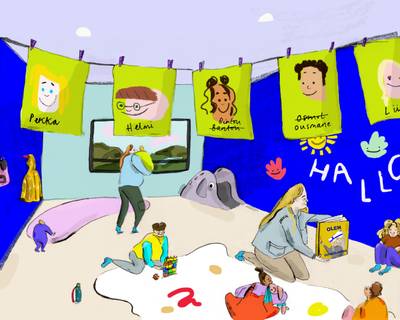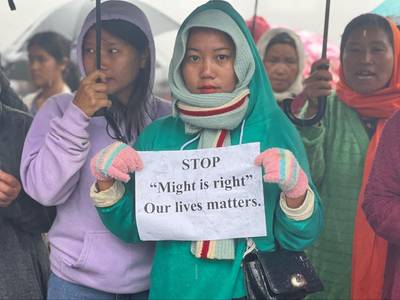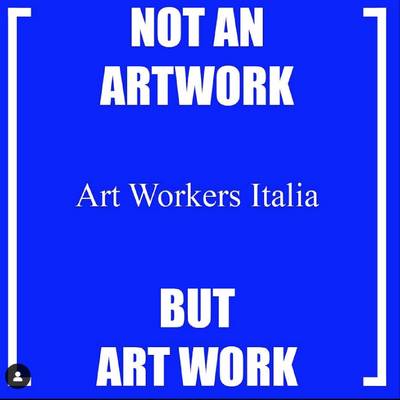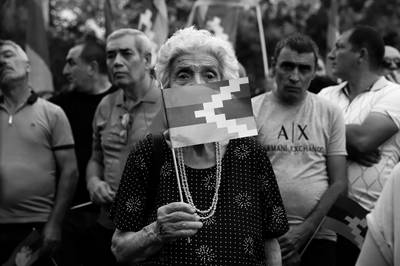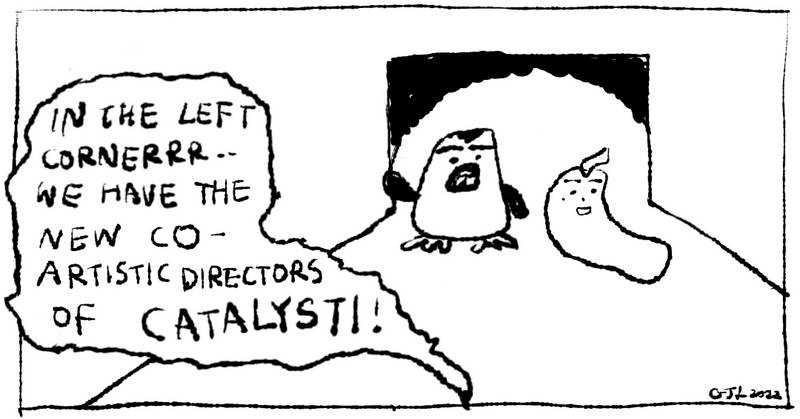

Illustration: Lin Chih Tung
Lin Chih Tung is a curator and artist based in Taiwan and Finland. Lin graduated from Praxis Exhibition Studies Master Programme at the University of the Arts Helsinki in 2021. They curate, do performance art, and make illustrations, but primarily their practice lies between these mediums. They often deal with communication, social relations, and play in their works.
If Not the Job
Three years ago, I arrived in Finland thinking little of what it meant to relocate. I settled into the role of a student and navigated my way through the foreign realm with privilege. The resources from the art university brought me to places, introduced me to the circle, and gave me access to many significant occasions. With great care and guidance, I sketched my very first picture of the life of a transcultural art worker based in Finland that consists of clear lines without crossovers. For a while, I pictured only fine structures and sharp outlines.
Post-graduation, I was told to forget about my naive sketches. I started to long for stability, something I used to despise. I’ve learned many survival skills over the years, but I’ve also fallen into the vicious cycle of conforming to conventional art field standards. The standards get stricter every time reality slaps me with facts. As I returned the sketchbook I used as a student, the Finnish society handed me a new one with an imprinted line, ‘Transcultural Art Worker Based in Finland’. (I flipped over the cover and found more imprints on the back of the cover that read, “Asian”, “East Asian”, “Non-EU/EEA”, “Non-Finnish Speaking”, “English Proficiency, well, good enough to impress people on some occasions.”)
At the beginning of March this year, Catalysti confirmed that I would take a position as its co-artistic director. A month later, as I started writing this text to speak about this new position and my perspective on what lies ahead, I recalled an alternative reality had Catalysti not hired me. I had to stop thinking these thoughts because it would be another marginalized person’s daily complaint. Still, it is my reality, and I take this chance to share it out loud:
I have learnt to ‘cherish’ a job with a fixed contract, an offer with a one-time payment, an invitation with an unknown source of funding, or amateur entrepreneurship. (I have learned to say no to volunteering and have been proud, thinking that I keep healthy boundaries.)
If I were not offered the job, I would have gone back to my home country, Taiwan, after I had acquired my degree for extended stays, hoping the rewarding trip back home would have eased my nerves and inspired me to come up with some brilliant better-tomorrow-solutions to solve my post-education anxiety. I would have gotten back to service work or cleaning. I would have gone to therapy (maybe from an online source) just to hear my white therapist tell me that I was too young, hence all my worries.
I have learnt to ‘cherish’ a job with a fixed contract, an offer with a one-time payment, an invitation with an unknown source of funding, or amateur entrepreneurship. (I have learned to say no to volunteering and have been proud, thinking that I keep healthy boundaries.) I have understood that the opportunities I am eligible for are way fewer and more cherishable. The competition is even fiercer because the few job openings friendly to us often come from small art organizations that have fought their way against the system.
The Job
After my first month on board, I have slowly started gaining perspectives from the co-artistic director as I dive into the association’s archive:
Catalysti seeks to provide a platform for transcultural artists and creative workers of all disciplines based in Finland. The association works as a catalyst in bridging opportunities acquired from various sources with an artist member base. By embracing diversity as its core mission, the association has been producing art events and cultivating networks and opportunities for its artist members and beyond since 2013.
Catalysti currently holds 186 artists in its member base. The member base, which is free to join, gathers diverse creative workers ranging from visual artists, performance artists, multidisciplinary artists, graphic designers, theatre performers, musicians, writers, cultural producers, curators, filmmakers, educators, researchers, and many more. The association operates various event productions, for example, an experimental live performance and music night, exhibitions that showcase all forms of art, or festival programs that feature circus acts and performance art. Catalysti’s events have been thoughtfully created to be multidisciplinary to cater to the interdisciplinary network of creative workers that it represents.
The board of Catalysti consists of representatives elected from the artist member pool. From the time when the association was initiated as a collective-like organic structure until the recent operation model, the board has been more or less functioning both as the managing and the directing role of the association. The board members alter on a rotating basis, but the chairperson leads the team in providing policy oversight, visionary leadership, event production, outreaching and networking, collaboration, member engagement, and all that matters to the association. Catalysti’s operation relied heavily on the board’s endeavors, while the association’s image has been communicated by the multiple events and collaborations they have fostered.
Catalysti derives its income from the grants it receives. Obscure it might seem, Catalysti’s grant applications often appear as a package of projects. Small-scale or bigger projects are initiated by the board members and are coordinated by them or outsourced once funding is obtained. Alongside other projects generated from collaborations with partner organizations, all of which align with Catalysti’s values—engaging multidisciplinary art activities or creating opportunities for its member artists, and always free of charge. During Annual General Meetings, openings of a board member’s position can be filled by active candidates from the member base. As the board members change, the projects Catalysti showcase also alter. While many of the projects have been initiated by the board members, job positions that come with the projects, such as a project coordinator, a commissioned artist, a curator, etc., are generally put out to the public and prioritized for the artist members’ participation. A few projects that shone a board member’s name; however, left the impression that Catalysti’s events are sometimes only for active members of the association. The question of activeness and resource distribution within the artist member base thus becomes one of Catalysti’s main challenges.
While I lack a well-rounded understanding of the association, I have grasped its surface, which is sufficient for intrinsic thinking and reflection. I have been thinking of Catalysti’s operational model before joining the association. It is a model in which members dedicate voluntary time and effort to make functions. The fuel to keep the model running is enthusiasm, eagerness to make a change, and an initial hope of obtaining better resources through uniting and representing diversity in the Finnish art and culture scene. For many years in Catalysti, the board has served the association’s administrative operations. The funds in Catalysti’s budget usually go to projects, and the manual costs are included, and as a result, the backbone maintenance labour gets diminished at times. Board members often remain underpaid or unpaid while performing excessive work. Consequently, the blurring role of the board due to their involvement in curating and producing Catalysti’s programs confuses those who are outside of it and often its members. How do things work in the association? As the question of transparency becomes a discussion, clarifying the organizational structure of Catalysti has become an urgent matter for me to ponder upon.
‘Artist-run’ is how I look at Catalysti. However, any association faces its challenges regarding maintenance and development in the long run. ‘Artist-for-artist’ is no longer a tactic for a bigger organizational vision. Acknowledging the toxicity and unsustainability of unpaid labour, excess work, and passion-fueled responsibilities, Catalysti has set off into a new era as an organization after a strategy plan titled Catalysti 2.0 received a grant from the Kone Foundation in 2021. The two-year program Catalysti 2.0—a new vision that focuses on multiple aspects of reconfiguring the organizational structure of Catalysti. The program includes hiring two people per year from the membership pool to act as the artistic directors. Each year, the artistic directors will organize one exhibition and a series of events and workshops hosted by artists for the general public; secure funding for future projects; and strengthen networks with existing and potential partners. The Catalysti 2.0 program “seeks to transform the association into a sustainable multi-voiced organization with an active support environment, democratize the old operating model and create a new one based on transparency, paid labour, and equal opportunities.”
‘Artist-run’ is how I look at Catalysti. However, any association faces its challenges regarding maintenance and development in the long run. ‘Artist-for-artist’ is no longer a tactic for a bigger organizational vision.
With the Catalysti 2.0 program, the association addresses its internal shortfalls by discussing exclusive paid positions in the Finnish art scene by taking on a new operating model. A pair of co-artistic directors are hired each year to be more opportunities for other potential candidates to serve for the association. While a one-year paid position is likely the longest one Catalysti has yet to provide since it was founded, I wish there would be possibilities for more job positions like this and more extended employment opportunities the association can offer in the long term. What comes after the Catalysti 2.0 model? Will the association bounce back to the pre-2.0 model after the granted period? I hope that we, the co-artistic directors and the board, share a consensus on keeping a sustainable model. However, while I speak about my wishes, I should return to the grounds of this job position and its objectives.
My Job
While I occasionally felt that the one-year position as a co-artistic director is a Wanna Run an Association? Simulation game, I have identified the different episodes of challenges I shall overcome:
I have thought of testing ideas but realised that an essential part of the job is replying to emails, managing social media platforms, and taking meetings that might not necessarily lead to instant outcomes. My worries reflect the possible downsides of the Catalysti 2.0 operating model, but more importantly, they indicate the required generative work in the job of an artistic director. Having a framework of the job thus helped me with concretising plans and managing time.
The association comprises all the artists who joined the member base. It is the board and the directors’ endeavour to provocate organisational actions. Still, members share equal say on what they wish for the association, and they are free to get more engaged with the association if they want. Open annual meetings, meet-and-greets, and art events hosted by Catalysti open up chances for engagement and connections, or even complaints and confrontations. However, people inevitably position themselves in different levels of activeness as members. Moreover, we could have failed in communication, making the members unsure of how to engage with us. Encouraging more organic and mutual exchanges among the members and the members with Catalysti is indeed one of the most significant episodes.
I have thought of testing ideas but realised that an essential part of the job is replying to emails, managing social media platforms, and taking meetings that might not necessarily lead to instant outcomes. My worries reflect the possible downsides of the Catalysti 2.0 operating model, but more importantly, they indicate the required generative work in the job of an artistic director.
When an association like Catalysti aims to create an inclusive platform, finding balance in resource distribution is crucial. While I reviewed the past events and activities of Catalysti, I wondered about this, how many of the 186 members of Catalysti participate in the association’s events and activities or are directly involved with its operation? What does ‘Catalysti Represents’ stand for? Does Catalysti only represent its most active members? In this time of transition for Catalysti, I think it is essential to redefine slogans, identify problematics, contemplate contradictions, and convey our message correctly.
Another issue that I face as a co-artistic director is sourcing funds. Catalysti received funding for other projects under the association’s banner before its 2.0 model. So, the only budget that the co-artistic directors can use is to organise one exhibition and two workshops. Since no additional funding is allocated for the artistic directors’ use, having ‘free hands’ in creating and implementing plans is limited. This means acquiring a budget becomes an integral part of the job. I wonder how we, as the current pair, could draft applications flexible enough for possible alterations by the next pair of artistic directors as they will be the ones handling the results. The job requires connecting with partner organizations and reconfiguring relationships with Catalysti members. However, because we are likely unable to afford collaborative events with partners or additional events where we can hire people, we must reinvent approaches that generate similar effects, such as lobbying work, creating more networking events, developing social media strategies, etc. I am concerned about whether this work condition will be consistent in the association’s future. How long can an art association operate under short-term funding? How many fellow organizations suffer from the same problem as Catalysti? Have they found solutions? How does Catalysti stay true to its mission of granting more opportunities as an association under such restrictions?
